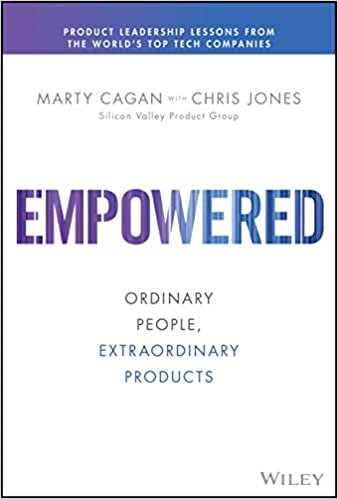Empowered: Ordinary People, Extraordinary Products – by Marty Cagan and Chris Jones
Recommendation: 8/10. Date read: 2/4/21.
Anything Marty Cagan touches is likely going to be an incredible, detailed resource for Product Managers. While Inspired focuses on best practices from discovery through delivery in an effective production organization (individual contributors should start with Inspired), Empowered focuses on product leadership. The book highlights the role of product leaders in creating an environment where greatness can emerge through effective coaching, staffing, team topology, product vision, product strategy, and objectives. Cagan and Jones pull everything together with case-studies from top tech companies and leaders throughout the book to show concepts in action. As with Inspired, the emphasis is on creating empowered product teams that have meaningful problems to solve, rather than features to build.
See my notes below or Amazon for details and reviews.
My Notes:
Empowered product teams:
Strong product companies give teams problems to solve rather than features to build. Teams are then empowered to solve those problems in the best way they see fit. Because the best people to determine the most appropriate solution are those closest to the problem, with the necessary skills (the product team).
Output does not equal impact: It’s far better to miss a date and ship something that solves a real pain point and delivers real business results. This is the difference between feature teams (measured by output) and empowered product teams (measured by outcome and results).
Three characteristics of strong product teams: tackle risk early, solving problems collaboratively, accountable to results.
Collaboration-based decision-making is not about consensus, not about pleasing the most people (dot voting), and not about having one person who's forced to make all decisions. If the decision is about enabling technology, we can debate, but defer to the tech lead. If the decision is primarily about the user or customer experience, we defer to the product designer. If the decision is about business viability, we defer to PM who collaborates with relevant stakeholders.
“The essential point of team objectives is to empower a team by (a) giving them a problem to solve rather than a feature to build, and (b) ensuring they have the necessary strategic context to understand the why and make good decisions.” MC
Product manager responsibilities:
Ensure solutions are valuable (customers will buy the product and/or choose to use it) and viable (it will meet the needs of the business). The designer is responsible for ensuring it’s usable. The tech lead is responsible for ensuring it’s feasible. Together this team is responsible and owns results.
“Your highest-order contribution and responsibility as a product manager is to make sure what the engineers are asked to build will be worth building.” MC
Product strategy helps us decide what problems to solve, product discovery helps us figure out tactics that can actually solve the problems, and product delivery build that solution so we can bring it to market.
The role of managers:
“If you want to have truly empowered product teams, then your success depends very directly on these first-level people managers. If you are wondering why there are so many weak product companies in the world, this would be the primary culprit.” MC
Critical skills of managers: understand and can communicate product vision, principles, and product strategy from senior leaders. Additionally, have three important responsibilities…
Staffing
Coaching
Team objectives
Coaching mindset:
Developing people is job #1. If you are a manager, you should be spending most of your time and energy coaching, unlocking, and leveling up your team.
Remove impediments, clarify context, and provide guidance.
Seek out teaching moments to help people stretch beyond their comfort zone and navigate adversity.
“The best product leaders measure their success in how many people they’ve helped earn promotions, or have moved on to serve on increasingly impactful products, or to become leaders of the company, or even to start their own companies.” MC
Assessing product skills:
Product knowledge, process skills and technique, people skills and responsibilities. See page 41 for full details on what to look for.
Assess these skills to determine gap analysis (1-10 scale), then provide coaching, training, reading, or exercises to help PM develop in each area.
Interviews:
“A’s hire A’s, but B’s hire C’s.” A manager who is not an accomplished IC and who hasn’t been on the ground floor doing the work they’re speaking about can’t expect to effectively assess a candidate. As a result, they often end up hiring incompetent people.
Question to assess self-awareness: You’re a product person so I already expect that you’re strong in each. But how would you self-assess the following attributes?
Execution—how well do you get things done, do the right thing without being asked, and track lots of simultaneous targets?
Creativity—how often are you the person in the room with the most or the best ideas?
Strategy—how well do you get up above what you’re working on and put it into broader market or vision context then make this clear to others?
Growth—how good are you at figuring out ways to multiply effort through smart use of process, team management, and so on?
Objectives:
Objective is the problem to solve, key results tell us how we define success. See examples of good objectives on page 276 and page 340.

